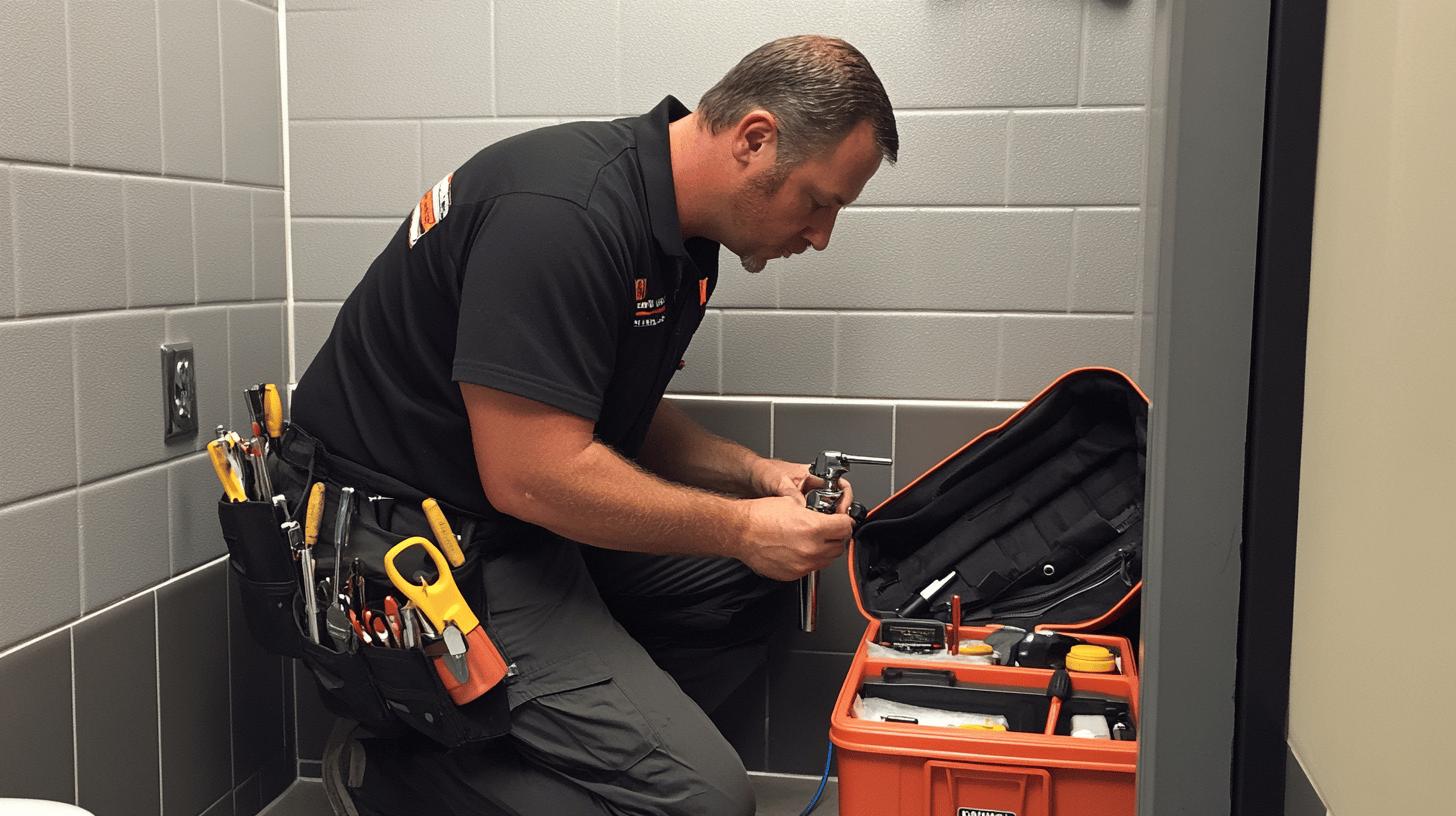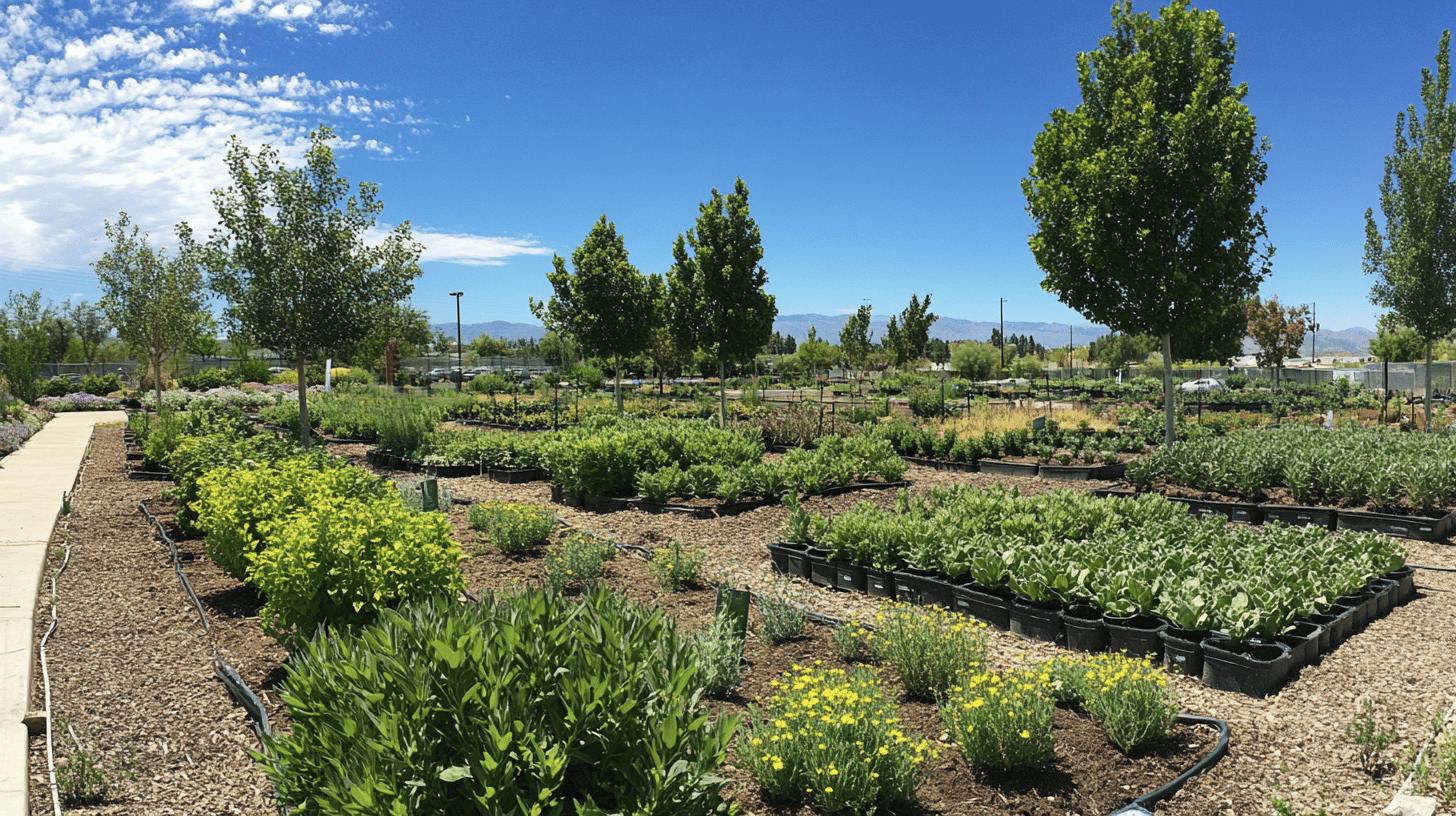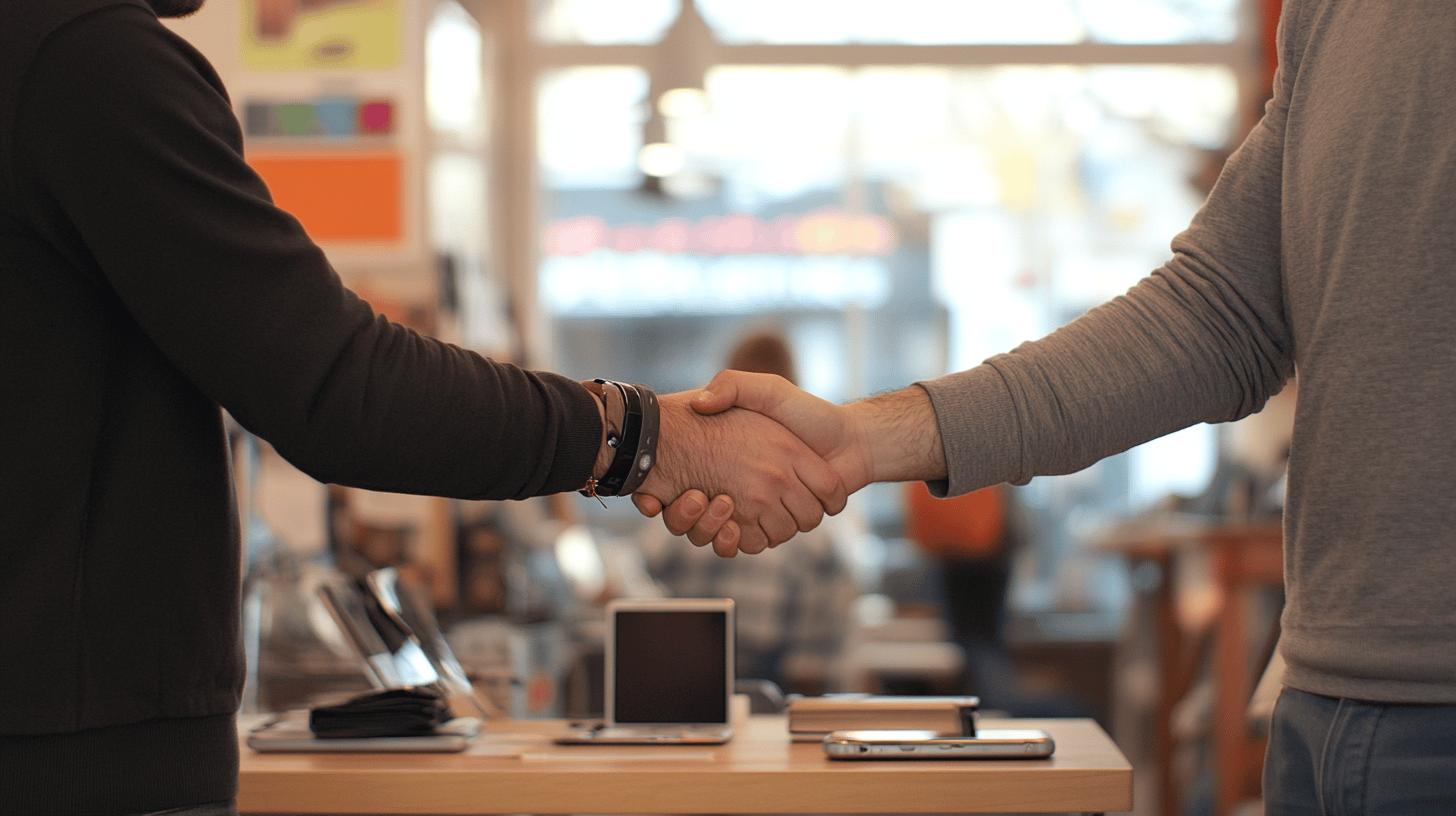TL;DR:
- Water Audit Importance: Identifies high usage areas, establishes benchmarks, and develops conservation strategies.
- Leak Detection: Dripping taps waste hundreds of liters monthly; quick repairs reduce costs and waste.
- Water-Efficient Technologies: Low-flow fixtures, efficient dishwashers, and smart meters significantly cut water usage.
- Landscaping Practices: Using native plants and drip irrigation can save up to 60% and 50% in water, respectively.
- Employee Engagement: Training fosters accountability and innovation in conservation efforts.
- Collaborative Partnerships: Joint audits and shared best practices with suppliers enhance conservation efforts.
- Technology Integration: Sensor-based irrigation, smart meters, and leak detection systems improve efficiency and conservation.
Is your business wasting money on water? With rising water costs, saving water isn’t just good for the environment—it’s also smart for your budget. By using effective water-saving strategies, you can cut down on your water bills and help the planet. This guide will give you practical tips to make your business more water-efficient, starting with an important step: doing a water audit. By checking how much water you use and making some changes, you can set realistic conservation goals, save money, and be a leader in sustainability. Let’s dive into how you can improve your water usage!
Conducting a Water Audit for Businesses
Doing a water audit is crucial for businesses that want to use water more efficiently. By looking at how much water you consume, you can find out where you’re using too much and set goals for conserving it. The audit involves checking past water usage data to spot any inefficiencies and potential savings. Setting benchmarks during this process helps you understand your current consumption and track your progress over time. By knowing your water needs and identifying waste, you can put strategies in place to reduce unnecessary use, which not only helps the environment but also lowers your costs.
- Examine Utility Bills: Analyze past water usage for patterns and anomalies.
- Inspect Plumbing Systems: Look for leaks and inefficiencies.
- Evaluate Equipment Use: Check water use by appliances and machines.
- Assess Landscaping Practices: Review outdoor water usage and identify areas to improve.
- Engage with Employees: Gather staff insights on water habits and wastage.
Regular water audits are essential for keeping business operations running smoothly. They provide a way to track how well your conservation efforts are working and make sure your strategies are effective. By conducting these audits regularly, businesses can improve their water-saving initiatives, leading to significant cost savings and a reduced environmental impact. Plus, monitoring your usage fosters a culture of accountability and sustainability, helping everyone stay committed to conservation in the long run.
Fixing Leaks and Dripping Taps in Business Facilities

A dripping tap can waste hundreds of liters of water each month! Fixing these leaks is essential for cutting down on waste in business facilities. Even small drips can lead to major losses, driving up utility costs and hurting sustainability efforts. Making quick repairs helps prevent bigger problems, ensuring your business uses water efficiently.
So, how can businesses find leaks effectively? Leak detection sensors are a great option for real-time monitoring, allowing you to spot issues right away. These modern tools provide accurate data on water flow, making it easier to respond to leaks quickly. Hiring professional plumbers is also smart; they have the expertise to diagnose and fix plumbing problems, ensuring everything runs smoothly. Investing in their help not only tackles current leaks but also prevents future ones, leading to better water management that saves money and supports sustainability.
Implementing Water-Efficient Fixtures and Technologies
How do water-efficient technologies impact water use? They can dramatically reduce consumption without sacrificing performance. By using these technologies, businesses can save a ton of money while still getting the job done. Adopting these tools not only helps conserve resources but also lowers operational costs.
Low-Flow Taps and Aerators
Why should you think about using low-flow taps and aerators? They mix air with water to reduce the flow while maintaining pressure. This means they cut down on water use in restrooms and kitchens, which can lead to lower bills and a smaller environmental impact. Switching to these fixtures is a great way for businesses to support conservation efforts.
Efficient Dishwashers and Laundry Equipment
What are the perks of upgrading to efficient machines? They use less water and energy, which saves you money in the long run. Efficient dishwashers clean with minimal water, and advanced laundry machines optimize their cycles to save even more. Upgrading not only cuts down on consumption but also boosts performance, making it a smart move for businesses that care about sustainability.
Smart Meters and IoT Solutions
How do smart meters and IoT improve water management? They give you real-time insights into how much water you’re using and help spot inefficiencies. Smart meters track usage accurately, so you can make data-driven decisions to cut down on waste. Plus, IoT solutions automate processes, making everything more efficient and supporting your sustainability goals.
- Eco-Friendly Urinals: Use waterless or low-water urinals to cut usage.
- Automatic Shutoff Valves: Stop flow when not in use, preventing waste.
- Greywater Systems: Reuse water from sinks and showers for irrigation.
Optimizing Landscaping Practices for Water Conservation

Why should you use native plants in landscaping? They’re better suited for local climates, so they need less water and care than non-native species. By choosing native plants, you can reduce water usage while still having a beautiful outdoor space. Plus, using drip irrigation delivers water directly to the roots, reducing evaporation. This approach ensures your plants get the water they need and promotes efficiency and sustainability for your business.
| Landscaping Strategy | Water Savings |
|—————————-|—————–|
| Using Native Plants | 60% reduction |
| Drip Irrigation Systems | 50% reduction |
| Mulching Garden Beds | 30% reduction |
How important is maintenance for water conservation in landscaping? It’s super important for keeping everything running smoothly. Regularly checking for leaks, adjusting irrigation systems, and getting rid of weeds helps prevent water waste. By staying on top of maintenance, you keep your landscape healthy, support your sustainability goals, and lower your overall water usage.
Engaging Employees in Water Conservation Efforts
Why train employees in conservation? It empowers them to spot and report issues quickly. Educating staff through sessions and campaigns fosters a responsible culture toward conservation. Employees trained to identify leaks or inefficiencies can take quick action, preventing significant waste.
How to engage employees effectively? Competitions and incentives for innovative ideas work well. Competitions drive creative water-saving solutions, while incentives encourage active participation and recognition. By involving employees in goal-setting and idea-sharing, businesses enhance engagement and collective action towards conservation goals.
Collaborating with Partners and Suppliers for Water Savings

How can you amplify your conservation efforts? By teaming up with suppliers and stakeholders, you can extend your initiatives beyond just your own operations. Working with suppliers who are committed to sustainability helps promote water-saving practices throughout the supply chain. This not only strengthens relationships but also encourages mutual growth.
What are some examples of partnerships that promote savings? In the textile industry, brands often collaborate with suppliers to improve efficiency in fabric production. By sharing resources and technologies, they can significantly reduce water usage. Some companies even partner with dye facilities to create closed-loop systems, which drastically cuts down on freshwater use, showing how shared goals can lead to big savings.
- Conduct Joint Audits: Assess usage with suppliers for improvement.
- Share Best Practices: Exchange knowledge on technologies and strategies.
- Set Collaborative Goals: Establish targets and track progress together.
- Host Workshops and Training: Organize sessions to build awareness and skills.
How can sharing success stories inspire action? By highlighting real benefits, these stories motivate others to adopt similar practices. When businesses share their achievements, they create a blueprint for others to follow, encouraging partnerships and broader industry adoption of sustainable methods. As more people get involved, the collective impact on conservation becomes substantial, driving bigger changes across the board.
Embracing Water-Saving Technologies in Business Operations
Why integrate technology into management? It boosts efficiency and sustainability significantly. Using advanced solutions helps conserve resources and provides insights into consumption, which supports better planning and cuts costs. By incorporating technology into management, businesses can achieve long-term savings and enhance overall operational efficiency.
Sensor-Based Irrigation
What are the benefits of outdoor management? It uses sensors to deliver water efficiently by checking moisture levels, ensuring plants get just the right amount. These systems adjust watering schedules based on real-time data, which helps minimize waste and over-watering. This not only cuts costs but also promotes healthier plants.
Smart Water Meters
What insights do they provide? They give accurate, real-time data on water usage, helping to identify patterns and inefficiencies. This data-driven approach highlights areas for improvement, allowing for targeted measures. Continuous tracking can quickly address any unusual spikes in usage, reducing waste and optimizing practices.
Advanced Leak Detection Systems
Advantages? They offer real-time monitoring and quickly alert businesses to leaks. Fast detection prevents water loss and damage to infrastructure. These systems help keep plumbing efficient, reducing costly repairs and minimizing waste.
- Low-Flow Sensor Faucets: Reduce usage by shutting off automatically.
- Water Recycling Systems: Treat and recycle water for non-potable uses.
- Rainwater Harvesting Systems: Collect rainwater for irrigation, conserving potable water.
- Smart Irrigation Controllers: Adjust watering based on forecasts and conditions.
- Greywater Systems: Reuse water from sinks and showers for irrigation, cutting fresh use.
Final Words
Saving water in business is essential for long-term sustainability. Start with a water audit to find high-use areas and set clear conservation goals. Fixing leaks is crucial to prevent waste. Using water-efficient fixtures and advanced technologies can also help reduce usage without disrupting operations.
Optimizing landscaping and engaging employees in conservation efforts build a culture of awareness. Partnering with others in the industry can further boost these initiatives. By implementing these strategies, businesses can conserve water, save money, and lead the way in sustainable resource management.
FAQ
How can you save water at home and in the office?
Saving water at home and in the office can be achieved by fixing leaks, installing water-efficient fixtures, and reducing unnecessary water use in daily tasks.
What are simple ways to save water?
Several easy ways to save water include taking shorter showers, turning off the tap while brushing your teeth, and using a broom instead of a hose to clean driveways.
How can organizations save water in commercial buildings?
Organizations can save water in commercial buildings by conducting audits to identify high usage areas, fixing leaks promptly, and installing water-efficient fixtures.
What are the strategies for water conservation in industry?
Industry strategies for water conservation include regular monitoring of water usage, fixing leaks, and implementing water-efficient technologies and recycling systems.
How can you save water as a student?
Students can save water by practicing mindful water use, such as taking shorter showers, reporting leaks in facilities, and opting for a reusable bottle over single-use plastics.
How can businesses manage a water business effectively?
Managing a water business effectively involves conducting regular water audits, setting conservation goals, training staff in water conservation, and staying updated with water-saving technologies.
What are some initiatives for saving water?
Water-saving initiatives can include community awareness programs, implementing school curriculum changes, business collaboration for water savings, and government-led conservation campaigns.

